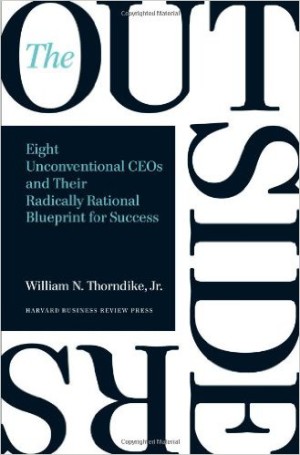This is the second post looking at how we can take the resource allocation checklist of The Outsiders by William Thorndike and translate it to the nonprofit world. Below are the next two on the list. Click here to see the first post.

3. Calculate what the return would be on all other opportunities and rank them according to the inherent risk.
Once you have defined what “profit” is for your nonprofit, then figured out a way to measure it, and finally decided what a minimal return on investment of your time, treasure and talent should be (all of which was covered yesterday), you have to look at all the opportunities and compare them based on risk.
Easier said than done sometimes. In part because so many nonprofits don’t commit themselves to their definition of “profit” and quickly slip into measuring success in different ways. Suddenly everything looks like a great investment because it all does some social good. So stick to your definition of “profit” and ruthlessly use it for ranking the opportunities.
Oh, and don’t forget the term “based on risk.” You must define the risk of each opportunity and then rank their “profits” in relation to that risk. For instance, will this new endeavor sap the energy of your staff? Will it compete with others who are already doing the work? Will it fail to attract the volunteers and donors needed? And most importantly, what if it simply doesn’t work and you have to back out of commitments to the people you are suppose to be serving?
The risks might be worth it — and most nonprofits are willing to tackle seemingly impossible odds. But don’t give in to the temptation to ignore the risk; rank your opportunities so you can wisely allocate your resources.
4. Calculate the return of buying back your own stock.
Yes, I’m well aware nonprofits cannot buy back stock. But a nonprofit can invest in what it is already doing well instead of allocating resources to new endeavors. And that’s what the corporations are doing when they buy back stock. As corporate CEO’s went through the steps above they realized what they were already doing offered superior returns than other opportunities.
Some nonprofits are very good at this discipline. They figure out what they do well and stick to it, adding all additional time, treasure and talents toward their strengths.
Others, especially young startup nonprofits, have a tendency toward mission creep. In part because they haven’t yet defined what their “profit” is, in part because many are addicted to entrepreneurial risk taking, and in part because they do not have the discipline to say no to every opportunity. I’m guilty of all those things, by the way.
So the lesson here for nonprofits is to look at what you are currently doing well. And if it is better than other opportunities, continues to allocate your resources to your core work.
Tomorrow I’ll post a few more points from the checklist. Give me feedback — does any of this ring true to you?

